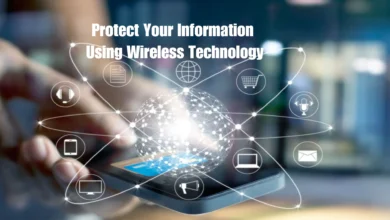How to Choose the Right IoT Network for Your Needs

The Internet of Things (IoT) is transforming businesses across industries by connecting devices and assets to collect and exchange data. However, implementing an IoT network involves several key considerations to ensure your devices can communicate and function efficiently. This article provides actionable guidelines on choosing the optimal IoT network for your specific needs.
Overview of IoT Network Options

There are several IoT network technologies to choose from, each with their own advantages and limitations:
Cellular Networks

Cellular networks like 4G LTE and the emerging 5G provide wide coverage areas making them suitable for connecting distributed assets and mobile IoT devices. However, data plans can get expensive with scale.
LPWANs
Low power wide area networks (LPWANs) like LoRaWAN and NB-IoT offer long-range connectivity with excellent battery life. But they have restrictions on bandwidth and number of messages.
Wired Networks
Ethernet and fiber provide reliable, high-bandwidth connectivity for fixed assets in industries like manufacturing. Yet, installing cables can be cumbersome and inflexible.
Wireless LANs
WiFi and Bluetooth networks enable quick setup of local IoT networks. However coverage is limited to short ranges under 100 meters.
Read related article: Remotely Manage IoT Devices: A Comprehensive Guide
Key Factors to Consider
Choosing the optimal IoT network depends primarily on your deployment environment and device requirements:
1. Location and Mobility
Will your assets be fixed or mobile? Indoor or outdoor? Urban or rural? Answering these questions will help narrow suitable network options.
For example, wide area cellular networks work for connecting shipping containers across states. But for factory machines in a single complex, Ethernet or WiFi may suffice.
2. Network Range and Coverage Area
Consider the physical breadth of your deployment and proximity between devices. Long range LPWAN networks can cover tens of miles making them ideal for large outdoor spaces. Whereas WiFi is better for short range networks within buildings.
3. Power Source Reliability
Can your devices be continuously powered? Or will they rely on batteries? Power-hungry networks like 4G LTE may drain batteries quicker than optimized LPWAN solutions.
4. Data Requirements
How much data do your sensors collect? Video feeds and control signals require higher throughput than occasional temperature readings. Match bandwidth capabilities to your volume and frequency needs.
5. Security Concerns
IoT networks carry sensitive data from connected devices and systems. Carefully evaluate the encryption, access controls and data governance of each option.
How to Check Data on IoT Devices Remotely?
Once deployed, an IoT network enables remote monitoring and management of connected devices through:
- Web-based dashboards
- Mobile applications
- API integrations with existing software systems
For example, a smart factory may view sensor data on panels mounted on shop floors. And executives can track overall equipment effectiveness metrics on digital dashboards accessed via the cloud.
Why Do IoT Devices Pose Security Risks?
Internet-connected endpoints like IoT sensors expand the attack surface for hackers to target. Vulnerabilities stem from:
- Weak default credentials on devices
- Unencrypted data transmission
- Outdated software lacking latest security patches
A breach allows attackers access to sensitive operational data. And compromised machines can be exploited to trigger disruptions across the physical network.
How Can I Access IoT Devices Remotely?
Enabling remote connectivity to IoT devices involves:
Connecting to the IoT Network
Devices must transmit data over the Internet, or a VPN tunnel into the network. Cellular and WiFi integrated chips simplify onboarding.
IoT Platform Integration
An IoT platform ingests, processes and manages data from devices. It provides interfaces for monitoring device status and activity in real-time.
Access Authorization
Multi-factor authentication ensures only approved users access devices. Granular permissions control what data each viewer or controller can change.
How Do I Monitor IoT Networks?
IoT platforms provide operational visibility through:
Dashboards – Centralized views of device data like status, utilization metrics and health indicators.
Alerting – Automatic notifications when specific conditions occur like equipment faults.
Analytics – Identify trends and patterns to optimize performance using BI tools.
API Access – Integrate with other business applications to consolidate device data across the enterprise.
Carefully designed interfaces allow technicians, managers and executives to each access relevant IoT data to make informed decisions.
Key Takeaways on Selecting an IoT Network
- Match network capabilities to your use case based on location, mobility, power, bandwidth and security needs
- Weigh tradeoffs like range vs power consumption and scalability vs hardware costs
- Consider future proofing as IoT deployments grow over time
- Leverage cloud platforms to securely monitor and manage remote devices
Choosing the right connectivity fabric is vital for extracting value from IoT deployments. Assess your options diligently by focusing on current requirements as well as future scalability.
Frequently Asked Questions
Q: How do I check data on devices connected through an IoT network?
A: IoT platforms provide remote monitoring capabilities through dashboards, alerts and analytics to view device data like utilization metrics, health indicators and trouble codes.
Q: Why do IoT devices pose a greater security risk than other network-connected systems?
A: Internet-connected edge devices like sensors, cameras and equipment expand the potential attack surface. Their vulnerabilities can allow attackers access to operational data and networks.
Q: How can I remotely access devices on my IoT network?
A: Key steps involve securely connecting devices to the Internet or VPN, ingesting data into an IoT platform, and implementing access controls like multi-factor authentication and role-based permissions.
Q: What are some options for monitoring IoT networks remotely?
A: IoT platforms facilitate remote monitoring through dashboards with status and performance metrics, alerts for defined events, analytics for insights, and APIs to integrate device data with other back-end IT systems.





